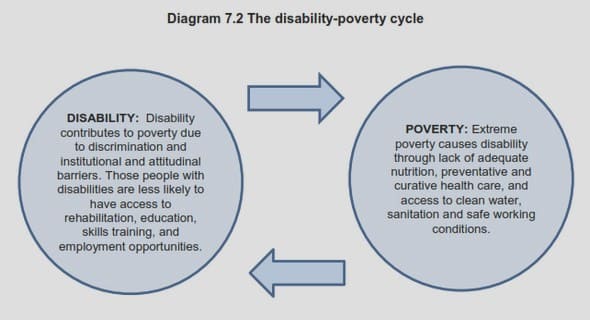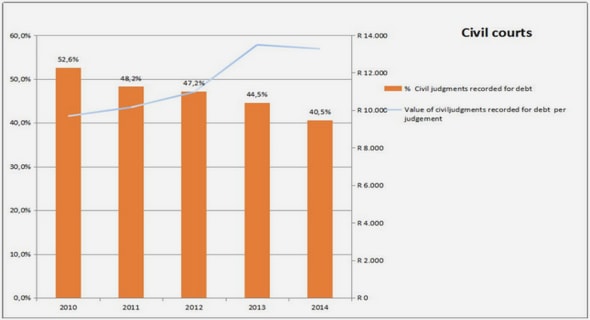Get Complete Project Material File(s) Now! »
mportance of the topic
Whenever a social problem arises, a general tendency is to call upon Parliament to legislate to address the situation.82 Relatively recent South African examples of such calls on Parliament include a “Bill of Morals”,83 safety at sport stadiums,84 anti-smoking provisions,85 transformation in sport,86 trauma caused to animals due to fire works,87 pirating of computer software,88 road traffic deaths,89 maintenance defaulters90 and minimum wages for domestic workers.91 At the same time a number of social commentators have noted an apparent lawlessness, non-application and the ineffectiveness of existing legislation in South Africa.92 Newspapers have also reported a number of incidences in the recent past relating to vigilante justice.93 Against a background of societal transformation in post-Apartheid South Africa, the thesis identifies some of the reasons behind this apparent paradox.
Analytical research
Parts of the thesis, like many “law and society” studies,122 proceed in a relatively a-theoretical manner.123 Broadly speaking, however, I follow a pragmatic and instrumentalist approach to “law” in the thesis, that takes the view that we can do no more than “tinker at the edges” or “muddle through”124 when considering the (better) use of law in society. I use “pragmatic” in the ordinarymeaning-of-the-word of being concerned about where law “works best”.125 Posner suggests that a legal pragmatist “lacks the political commitments of the realists and the crits”126 and elsewhere suggests that “those pragmatists who attack the pieties of the Right while exhibiting a wholly uncritical devotion to the pieties of the Left … are not genuine pragmatists; they are dogmatists in pragmatists’ clothing”.127 In Posner’s terms I am a “dogmatic instrumentalist” as I am sympathetic to the goals of social transformation as set out in the Constitution.
Comparative law research
If comparative law is the “comparison of the different legal systems of the world”,139 I do not undertake comparative law research in the thesis. Although a very large part of the annexures to the thesis consists of comparative material (court cases and legislation from Australia and Canada), the aim of the thesis is not to analyse these materials exhaustively or to compare these materials point by point to South African Acts or court cases. I do not hope to “resolve the accidental and divisive differences in the laws”140 of South Africa and other jurisdictions who have grappled with the problem of how to combat discrimination via the law. Parts of the thesis141 could perhaps be described as adopting an approach of microcomparison – concerning myself with “specific legal institutions or problems”142 (ie, discrimination tribunals and how to address discrimination via the law) .
A narrow focus on the Act; South Africa; unfair discrimination
I readily admit that the scope of the thesis is partial and limited. Many recent Acts underpin South Africa’s transformation,153 and the Equality Act should be understood as one of the cogs in this legislative wheel, not the wheel itself. It would however have been an extremely daunting, if not impossible task, to consider each of these Acts in detail, as well as its interplay with the Equality Act in a single doctoral thesis. In the thesis I focus almost exclusively on the Equality Act: it has been described as the most important Act to have been passed by the South African Parliament, second only to the Constitution,154 and it explicitly targets the effects of past discrimination, which arguably is the reason for the vast disparities in wealth, income and resources in South Africa.
I do not analyse the Employment Equity Act, although this Act also outlaws unfair discrimination, specifically in the workplace.155 The Employment Equity Act had a different drafting history, falls under a different government department (the Department of Labour), has been in operation for a much longer time and has different enforcement mechanisms. Critically, from a South African perspective where up to 40% of the population is estimated to be unemployed,156 employmentrelated, court-driven structural adjustments would be completely meaningless for a large portion of inhabitants, whereas the Equality Act holds greater promise in this regard.
Law as one normative order in a range of normative orders (legal pluralism)
In explaining what he has in mind when he refers to “legal pluralism”, Cotterrell refers to some of the pioneers of legal sociology such as Gurvitch, Petrazycki, Timasheff and Renner, and the American Realist Llewellyn.3 Gurvitch, for example, sees law as the “expression of order or harmony of different forms of ‘sociality’ or collective life”.4 The character of law differs depending on the kind of sociality and the kinds of social groups it regulates. Thus, law may be organised or unorganised, fixed in advance or fixed in an ad hoc manner, or be purely intuitive and may or may not be accompanied by sanctions.
Black Acts89
In the late 17th century a number of laws were passed in England that aimed at ensuring that only the owners of private land could hunt game on the land. Up to then, whoever could lay their hands on deer, squirrels, rabbits and wild fowl could keep it but after the passage of laws became “protected” animals – only the nobles were now allowed to hunt. Resistance to the laws developed. Groups known as “Blacks” formed, so called because they blackened their faces as part of their camouflage. The Blacks used various techniques of tracking and killing animals and were remarkably successful despite the best efforts of the noblemen. The Black Acts were passed, aimed at eradicating their activities. Poaching was made punishable by death; also being found with a blackened face. Courts set up to enforce the Black Acts had limited success. Blacks regarded hunting as a God-given right which they felt entitled to continue. The poaching struggle continued for decades. During this time the societal structure in Britain changed and a new middle class came to the fore. The middle class was landless and was also prohibited from hunting but by this time hunting had become associated with prestige and power and the new middle class wanted to share in the spoils. The nature of the hunting struggle changed. During the 19th century this new middle class succeeded in reforming the game laws. Everyone could now hunt game, but at the same time other laws introduced new restrictions – hunting licenses; permission from the landowner – that effectively excluded the rural poor from hunting.
Table of contents :
- Summary
- Opsomming
- Acknowledgments
- Table of contents
- List of tables
- Abbreviations and acronyms
- Chapter One: Introduction
- 1.1 Introduction
- 1.2 Aim of the study
- 1.3 Research assumptions
- 1.4 Importance of the topic
- 1.5 Literature review
- 1.6 Modus operandi and research methodology
- 1.6.1 Literature overview
- 1.6.2 Field research
- 1.6.3 Multidisciplinary research
- 1.6.4 Analytical research
- 1.6.5 Comparative law research
- 1.7 Limitations of this study
- 1.7.1 I am who I am
- 1.7.2 A narrow focus on the Act; South Africa; unfair discrimination
- 1.7.3 Empirical research; not normative inquiry
- 1.7.4 Time frames
- 1.7.5 Funding and sources
- 1.8 Overview of chapters
- Chapter Two: Law as tool of effective societal transformation?
- 2.1 Introduction
- 2.2 “Law”
- 2.2.1 Law as one normative order in a range of normative orders (legal pluralism)
- 2.2.2 Law as coercive order
- 2.2.3 Law as dispute processing
- 2.2.4 Law as doctrine
- 2.2.5 The approach adopted in the thesis
- 2.3 “Society”
- 2.3.1 A structural or consensus approach
- 2.3.2 A conflict, or critical, or dissensus approach
- 2.3.3 The approach adopted in the thesis
- 2.4 The relationship between “law” and “society” – The (in)ability of law to affect behaviour and attitudes and to steer society
- 2.5 Characteristics of effective law
- 2.6 A court-driven or legislature-driven social transformation?
- 2.7 Conclusion
- Chapter Three: The limits of the Act itself – Assessing the South African parliament’s response
- 3.1 Introduction
- 3.2 The limits of traditional anti-discrimination legislation
- 3.3 Parliament’s response to the limits of traditional anti-discrimination legislation
- 3.3.1 The Act adopts a substantive notion of equality and addresses systemic discrimination
- 3.3.2 The Act contains an open-ended list of prohibited grounds
- 3.3.3 The Act eases the complainant’s burden of proof
- 3.3.4 The Act creates an accessible enforcement mechanism: Equality courts
- 3.3.5 The Act creates a very broad scope of application; contains a single “fairness” defence; allows no sector-specific defences or exclusions
- 3.3.6 The Act creates broad standing provisions
- 3.3.7 The Act creates wide-ranging remedies
- 3.3.8 The Act creates a duty to promote equality
- 3.4 Measuring the Act against the characteristics of effective legislation
- 3.5 Conclusion
- Chapter Four: An inadequately trained pool of equality court personnel due to institutional incapacity
- 4.1 Introduction
- 4.2 State incapacity
- 4.3 The benefits of a microscopic study
- 4.4 Sketching the ideal?
- 4.4.1 Plan: Determine the objectives
- 4.4.2 Organise: Distribute the work; establish and recognise needed relationships
- 4.4.3 Actuate: Ensure that the members of the group carry out their prescribed tasks willingly and enthusiastically
- 4.4.4 Control: Control the activities to conform to the plans
- 4.5 An overly ambitious and unrealistic initial business plan
- 4.6 An ineffective overseeing body and unclear lines of accountability
- 4.7 Footdragging in the development of training material
- 4.8 Inadequate trainers’ seminars for judges, magistrates and clerks
- 4.9 Too much sensitivity to judicial opposition to training
- 4.10 Inadequate budgetary support
- 4.11 Deadlines missed; bureaucratic bungling
- 2 Absent impact assessment
- 4.13 An ill-considered Australian study visit
- 4.14 Analysis: Management failure
- 4.14.1 Plan: Determine the objectives
- 4.14.2 Organise: Distribute the work; establish and recognise needed relationships
- 4.14.3 Actuate: Ensure that the members of the group carry out their prescribed tasks willingly and enthusiastically
- 4.14.4 Control: Control the activities to conform to the plans
- 4.15 Conclusion
- Chapter Five: An empirical study illustrating the disjuncture between the ideals contained in the Act and popularly held beliefs
- 5.1 Introduction
- 5.2 Research methodology
- 5.3 Results of the survey
- 5.3.1 Demographical profile of the respondents
- 5.3.2 Profile of the respondents’ attitudes towards the political situation in South Africa and racial tolerance
- 5.3.3 Profile of the respondents’ views on discrimination
- 5.3.4 Profile of the respondents’ experiences of discrimination
- 5.3.5 Profile of the respondents’ views on hate speech
- 5.3.6 Profile of the respondents’ opinion of lawyers
- 5.3.7 Profile of the respondents’ views on South African courts
- 5.4 Analysis of the results of the survey
- 5.4.1 An ongoing legitimacy crisis
- 5.4.2 Little (overt) discrimination and an impoverished understanding of equality
- 5.5 Inadequate public awareness campaigns
- 5.6 Conclusion
- Chapter Six: Conclusion
- 6.1 Summary of main arguments
- 6.2 Proposals for reform
- 6.2.1 Proposed amendments to the Act
- 6.2.2 Institutional capacity
- 6.3 Avenues for further socio-legal research relating to the Act
- Annexure A: Content of initial training seminars – Judges, magistrates, registrars and clerks
- Annexure B: Tables – Empirical survey
GET THE COMPLETE PROJECT
A socio-legal analysis of the Promotion of Equality and Prevention of Unfair Discrimination Act 4 of

